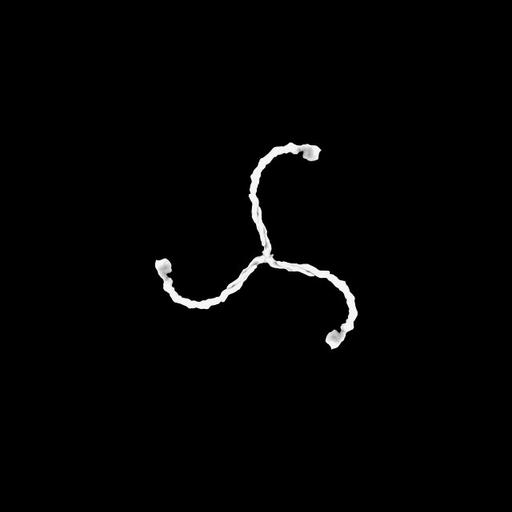ENDOCYTOSIS
Updated 05-May-2020.
Mondo shtuff from around the internet, all about ENDOCYTOSIS!
 CIL:12257. CIL. Dataset: “This animation shows the process of clathrin-mediated endocytosis of transferrin receptors, focusing on the assembly and disassembly of the clathrin cage. A single triskelion, which is approximately 100nm across at its widest point. I…
CIL:12257. CIL. Dataset: “This animation shows the process of clathrin-mediated endocytosis of transferrin receptors, focusing on the assembly and disassembly of the clathrin cage. A single triskelion, which is approximately 100nm across at its widest point. I…
 Mechanisms of Endocytosis: Endocytic mechanisms control the lipid and protein composition of the plasma membrane, thereby regulating how cells interact with their environments. Here, we review what is known about mammalian endocytic mechanisms, with focus on the cellular proteins that control these events. We discuss the well-studied clathrin-mediated endocytic mechanisms and dissect endocytic pathways that proceed independently of clathrin. These clathrin-independent pathways include the CLIC/GEEC endocytic pathway, arf6-dependent endocytosis, flotillin-dependent endocytosis, macropinocytosis, circular doral ruffles, phagocytosis, and trans-endocytosis. We also critically review the role of caveolae and caveolin1 in endocytosis. We highlight the roles of lipids, membrane curvature-modulating proteins, small G proteins, actin, and dynamin in endocytic pathways. We discuss the functional relevance of distinct endocytic pathways and emphasize the importance of studying these pathways to understand human disease processes.
Mechanisms of Endocytosis: Endocytic mechanisms control the lipid and protein composition of the plasma membrane, thereby regulating how cells interact with their environments. Here, we review what is known about mammalian endocytic mechanisms, with focus on the cellular proteins that control these events. We discuss the well-studied clathrin-mediated endocytic mechanisms and dissect endocytic pathways that proceed independently of clathrin. These clathrin-independent pathways include the CLIC/GEEC endocytic pathway, arf6-dependent endocytosis, flotillin-dependent endocytosis, macropinocytosis, circular doral ruffles, phagocytosis, and trans-endocytosis. We also critically review the role of caveolae and caveolin1 in endocytosis. We highlight the roles of lipids, membrane curvature-modulating proteins, small G proteins, actin, and dynamin in endocytic pathways. We discuss the functional relevance of distinct endocytic pathways and emphasize the importance of studying these pathways to understand human disease processes.
 Molecular mechanism and physiological functions of clathrin-mediated endocytosis: Clathrin-mediated endocytosis is a modular process that involves core and accessory adaptor proteins that package cargoes into vesicles, ultimately leading to their uptake. It is essential for many physiological processes in higher eukaryotes, including signal termination and exocytosis, so its components are rarely associated with disease.
Molecular mechanism and physiological functions of clathrin-mediated endocytosis: Clathrin-mediated endocytosis is a modular process that involves core and accessory adaptor proteins that package cargoes into vesicles, ultimately leading to their uptake. It is essential for many physiological processes in higher eukaryotes, including signal termination and exocytosis, so its components are rarely associated with disease.
My botty best at summarizing from Wikipedia: endocytosis is a cellular process in which substances are brought into the cell . the material to be internalized is surrounded by an area of cell membrane . it then buds off inside the cell to form a Clathrin-mediated endocytosis is mediated by the production of small (approx. 100 nm in diameter) vesicles that have a morphologically characteristic coat made up of the caveolae are small (approx. 50 nm in diameter) flask-shape pits in the membrane that resemble the shape of a cave . they can constitute up to a third of potocytosis uses caveolae vesicles to bring molecules of various sizes into the cell . material endocytosed via pototosis is released into the cytosol . pinocyto Graf1 regulates a highly prevalent clathrin-independent endocytic pathway known as the CLIC/GEEC pathway . early endosomes are often located in the periphery of the they have a characteristic tubulo-vesicular structure and a mildly acidic pH . they are principally sorting organelles where endocytosed ligands dissociate from receptors . lysosomal membrane glycoproteins and acid hydrolases are acidic (approx. pH 5.5) they are part of the trafficking pathway of mannose-6-phosphate receptors . late endosome the approximate pH of a lysosome is 4.8 and by electron microscopy (EM) usually appear as large vacuoles (1-2 m in diameter) they have a high content of membrane proteins and an eisosome serves as a portal of endocytosis in yeast . coats function to deform the donor membrane to produce a vesicle . they also function in the selection of the clathrin coats are involved in two crucial transport steps: receptor-mediated and fluid-phase endocytosis and transport from the TGN to endosomes . in cultured cells, the assembly of AP2 adaptors are multisubunit complexes that perform this function at the plasma membrane . the best-understood receptors are found concentrated in coated vesicles of mammalian cells once the coat has been shed, the remaining vesicle proceeds down the endocytic pathway . the actual budding-in process is carried out by clathrin assisted by a set of cyto